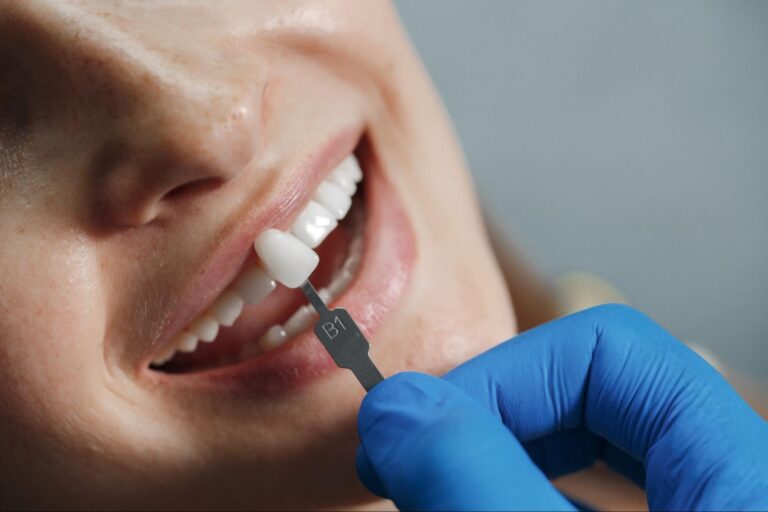Tooth loss can impact daily activities like eating and speaking while affecting overall oral health. Dental bridges are a treatment option designed to restore both functionality and aesthetics. Here is more information on what crowns and bridges are, how they differ, and how bridges can benefit oral health:
What Are Crowns and Bridges?
Crowns and bridges are dental restorations that replace or repair damaged and missing teeth. A crown is a cap placed over an existing tooth to restore its shape, strength, and appearance. It is often used on teeth that are cracked, decayed, or have undergone root canal treatment.
A bridge is a prosthetic structure used to replace one or more missing teeth. A bridge is typically supported by adjacent teeth, which act as anchors. The replacement tooth, called a pontic, fills the gap left by missing teeth to provide a seamless appearance and functional solution. Both crowns and bridges are custom-designed to match the color, size, and shape of natural teeth, offering a realistic restoration.
What Are the Differences Between Them?
While crowns and bridges are both dental restorations, they serve distinct purposes. A crown focuses on restoring an individual’s damaged tooth, covering its external surface to protect and strengthen it. It may be used when the tooth’s root remains intact but the visible portion is weakened. Crowns can also be applied to dental implants.
Bridges are used to replace missing teeth entirely. They connect multiple artificial teeth, with support from surrounding natural teeth or implants. Bridges not only restore the appearance of a natural smile but also fill functional gaps to improve oral performance. While crowns are used independently, bridges are often part of a more comprehensive solution, which may include crowns for added stability.
How Do Bridges Improve Oral Health?
Missing teeth can lead to long-term issues if left untreated. Bridges help restore oral health by addressing these concerns:
- Preventing Shifting Teeth: When a tooth is missing, adjacent teeth can shift into the empty space, leading to changes in bite alignment, uneven pressure on teeth, and potential jaw pain. By filling the space, bridges minimize the risk of future misalignment.
- Improving Functionality: Missing teeth can make chewing and speaking challenging. Bridges restore these functions by mimicking the natural structure of your teeth, allowing you to bite and articulate words more normally.
- Maintaining Jaw Integrity: Tooth loss over time can contribute to jawbone deterioration due to a lack of stimulation. While bridges do not provide the same support as implants for bone health, they maintain facial structure by filling the visible gap and distributing chewing forces evenly.
Bridges offer a restorative solution that improves appearance and supports overall oral function and stability.
What Does the Process Involve?
A dentist begins by preparing the supporting teeth, also known as abutment teeth, by reshaping them to accommodate the crowns that anchor the bridge. After preparation, impressions or digital scans of the teeth are taken to create a custom bridge that fits precisely. While the final bridge is being crafted, a temporary bridge may be placed to protect the prepared teeth. Once the permanent bridge is ready, the dentist will fit and secure it, and adjustments may be made to improve functionality before the process is complete.
Seek Expert Guidance Today
Dental bridges provide a reliable solution for restoring missing teeth and improving oral health. They promote functionality, aesthetic balance, and stability in your dental structure. If you are evaluating a dental bridge or want professional advice, consulting a qualified dentist helps determine the best solution. Begin your path to a healthier smile by scheduling an appointment today.
- How Dental Bridges Improve Your Oral Health
- How to Overcome Dental Anxiety and Feel Comfortable at the Dentist
- Why Routine Visits to the Dentist Can Save You Money in the Long Run
- How To Evaluate for Dementia
- How to Maintain Your Bright Smile After Teeth Whitening Treatment
